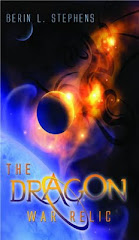IV. The Joke's
on Hugh
I'm sure you've
heard the expression by now, “The secret to humor is surprise.”
And it's true, especially in the joke department.
Jokes are a
subset of comedy writing. They are primarily the domain of the
stand-up comics and that guy who seems to be at the water cooler
every time you walk by. A joke is primarily a short story with a
humorous twist at the end. The problem is that you can't build a
novel out of them. You can use them, but only as one of many tools.
Writing jokes can
be boiled down to this simple graph:
“What does it
mean?” you ask. It's not very exciting to look at, but keeping this
simple graph in mind can help us when writing our jokes. The
horizontal line represents the set-up; it is the expectation created
in our audience's mind. The sudden 90 degree change represents the
punchline that twists away from the expectation.
Here's an example
by Richard Dran: “I have a rock garden. Last week, three of them
died.” We're first set up to believe we are talking about a nice
little ornamental display made out of rocks. When the last word,
'died', hits, its an unexpected twist that we find funny. Why?
Because rocks can't die, unless you are a really, really horrible
rock gardener.
Here's another
example: President Obama and former presidents Clinton and Bush are
all out hunting together. They discover some tracks, stop, and try to
determine what animal created them. Bush says, “Those are rabbit
tracks.” Clinton says, “No, no, I've seen these a lot while in
Arkansas. These are deer tracks.” The two of them argue for quite a
while until they decide to ask the current president for his wise
opinion. Before Obama can answer, all three of them are run over by a
train.
See how the
misdirection works? This time, the expectation is that they are
looking at tracks created by one of our cute, furry friends. Then
BAM! No more presidents. There's also the element of three
supposedly intelligent men being completely stupid but we'll talk
more about opposites and contrasts later. It also uses the rule of
three, which I'll talk about next week.
The trick is to
make sure we surprise the audience. If it is too predicable, though,
our audience can lose interest. I'm sure you've been to a movie or
read a book where at some point you predicted what would happen next.
When you predict a lot of it correctly, do you like it more or less?
At the opposite end of the spectrum, if it's too hard for the
audience to make the connection, we also lose.
The moral of the
story: find ways to create surprise by using the sudden twist.
Over the next few
weeks, we'll discuss some ways to utilize the joke formula, as well
as other tools for creating our 'atmosphere of funny'.


No comments:
Post a Comment